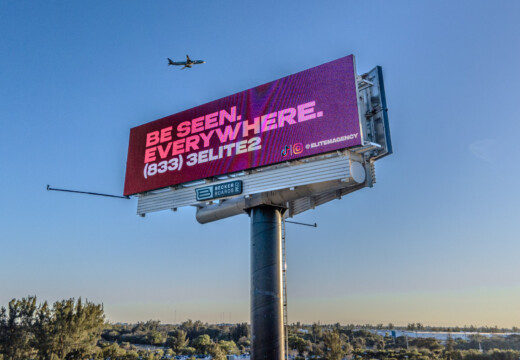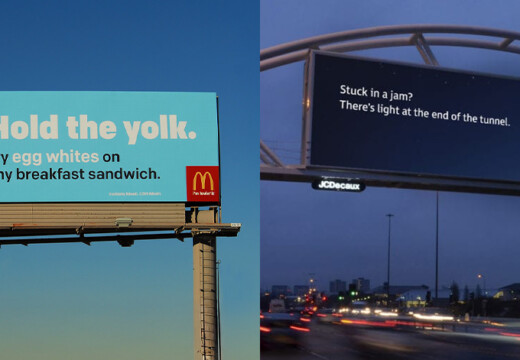Billboard ad violations can lead to fines, removal orders, and damaged reputations. Here’s a quick overview of the most common violations, their impact, and how to fix them:
- Content Violations: Ads with adult themes, misleading claims, or improper disclosures often violate regulations. Regular reviews can help avoid these issues.
- Placement Issues: Billboards near schools, parks, or highways may breach zoning laws. Use location planning tools to ensure compliance.
- Technical Problems: Common issues include excessive brightness, unsafe animations, and improper spacing from traffic signals. Automated systems can help maintain technical standards.
- Permit and Tax Noncompliance: Missing permits, late renewals, or incorrect tax filings can result in fines. Stay organized with document management and regular reviews.
Quick Tips for Compliance:
- Pre-Launch Checks: Verify content meets local, state, and federal rules.
- Regular Maintenance: Inspect brightness, animations, and structural integrity.
- Stay Organized: Keep permits, tax filings, and inspection records up to date.
- Use Tools: Platforms like Blip simplify location planning and compliance checks.
By following these steps, you can avoid violations and ensure your billboard campaigns run smoothly.
Annapolis billboard has visitors talking about potential code violations
Content Rules and Compliance
Billboard ads need to align with local, state, and federal regulations to avoid potential violations. Regularly updating and reviewing your content ensures it stays within legal boundaries while remaining relevant. Let’s break down the types of prohibited content and how to ensure compliance.
Types of Banned Content
Though restrictions can differ depending on the region, some categories are widely prohibited, including:
- Content with adult themes or explicit material
- Misleading or deceptive claims
- Promotions for regulated products
- Political ads that lack proper disclosures
How to Stay Compliant
To keep your campaign on the right side of the law while maintaining its effectiveness, consider these steps:
- Pre-Launch Review
Before launching, verify that your ad meets all truth-in-advertising guidelines, adheres to specific regulations, and includes any necessary disclaimers or disclosures in a visible manner. - Regular Content Audits
Conduct periodic reviews to ensure your ads remain compliant with changing laws. Use these audits to document any adjustments made and to address feedback from consumers. - Thorough Documentation
Maintain a detailed record of compliance checks and approvals. This includes tracking any modifications made to meet regulatory standards, providing a clear trail if questions arise later.
Placement and Zoning Rules
Billboard placement rules play a key role in ensuring legal compliance while maximizing visibility and impact.
Placement Restrictions
When it comes to billboard placement, several key regulations must be followed:
- Distance Requirements: Many areas enforce minimum distances between billboards and locations like schools, churches, and residential neighborhoods to maintain community standards.
- Highway Regulations: Federal and state laws often limit billboard placement along interstate highways. These restrictions include specific setback distances and spacing rules.
- Local Ordinances: City and municipal codes can impose additional rules, such as height limits, size restrictions, lighting guidelines, and buffer zones near residential areas.
These rules not only ensure compliance but also provide a framework for finding the best spots for your billboard. As Chris Leslie, Founder of Leslie Lightcraft Co, puts it:
“It’s not a social media thing that you see on your phone. It’s not word-of-mouth. It’s big and bold and out there in public. I would say this is the first step of looking big and public”.
Location Planning Tools
Thanks to modern tools, identifying compliant and strategic billboard locations has never been easier. For instance, Blip’s “See Locations” feature allows users to verify potential sites in real time. Paul Willey, Owner of Mr. Charlie’s Chicken Fingers, highlights the benefits:
“Working with Blip has given Mr. Charlie’s the momentum to get our new location on the map while accelerating growth for our original location”.
When planning your billboard location, keep these factors in mind:
- Areas with high traffic to maximize exposure
- Optimal viewing angles for clear visibility
- Surrounding conditions that enhance the ad’s prominence
Technical and Safety Requirements
When it comes to digital billboards, adhering to technical standards is just as crucial as content and placement. These standards ensure compliance with legal regulations and safeguard public safety.
Technical Rule Violations
One of the most common technical missteps is exceeding brightness limits – specifically, going over 0.3 foot candles above ambient light levels. Other violations include:
- Exceeding the 0.3 foot-candle brightness limit
- Lack of automatic dimming sensors
- Nighttime glare that distracts drivers
- Content rotations shorter than the 8-second minimum
- Using animated transitions instead of instant changes
- Insufficient distance from traffic signals (500–2,500 feet)
For example, in Puerto Rico, digital billboards were initially set to emit 250 nits at night, which led to complaints about excessive brightness. The introduction of automatic dimming technology resolved these issues and significantly reduced complaints. Meeting these technical requirements not only avoids penalties but also lays the groundwork for broader compliance.
Meeting Technical Standards
Managing Brightness
Proper brightness control is a cornerstone of compliance. Here’s how it’s measured and maintained:
| Parameter | Specification | Method |
|---|---|---|
| Brightness | 0.3 fc over ambient levels | Measure at 150–350 feet |
| Dimming | Automatic adjustment | Real-time monitoring |
| Height | 5 feet from ground | Follow IESNA TM-11-00 guide |
Maintenance Essentials
Regular maintenance is vital to ensure both safety and adherence to regulations. Key tasks include:
- Running system diagnostics
- Cleaning optical sensors
- Verifying brightness levels
- Scheduling professional inspections
- Conducting structural integrity checks
A 2024 CivicLex study revealed that automated compliance systems reduced violations by 82% compared to manual inspections.
To further enhance safety and reliability, operators should:
- Use UL-certified power systems with ground fault detection
- Install IP65-rated enclosures to protect against weather damage
- Equip systems with redundant circuit breakers (minimum 50kA capacity)
- Maintain detailed records of all technical checks and maintenance activities
Lastly, the OAAA advises that digital billboard ads display for 6–8 seconds to meet recommended standards. Keeping up with these practices ensures digital billboards operate safely and within legal limits.
Permits and Tax Requirements
When it comes to operating billboards, staying on top of permits and tax obligations is just as important as following technical and placement rules. Overlooking these details can lead to serious compliance issues.
Required Documents
One of the most common reasons for billboard permit violations is incomplete or missing documentation. In Michigan, for instance, operators often fail to submit critical forms like Form 2495 (landowner consent) and Form 3700 (zoning certification). Such oversights can result in hefty fines or even force operations to shut down.
Permit requirements vary widely by state, and understanding these differences is crucial:
| State | Initial Permit Fee | Annual Renewal | Additional Requirements |
|---|---|---|---|
| Michigan | $200 (digital) | $200 | Landowner consent forms |
| Texas | $225 combined | $75 | License + permit bundle |
| California | $100 | $100 + CPI | Environmental impact reports |
| Louisiana | $75–$250 | Varies | Based on sign face area |
Failing to comply with these rules can lead to significant penalties. For example, Washington state fines operators up to $500 per day for violations, Florida may revoke permits if renewals are incomplete within six months, and Missouri enforces a strict seven-day inspection rule, shutting down operations for non-compliance. These examples underscore the importance of meticulous document management to meet varying state requirements.
Document Management
Staying organized with permits is only part of the equation – tax compliance and adherence to local regulations are equally important.
Property Tax Compliance
Tax rules for billboards differ from state to state. In Utah, billboards are valued at $0 for tax purposes after 20 years. Meanwhile, states like California and Florida use cost-based assessments instead of income-based methods.
Special Tax Considerations
Tax obligations can vary significantly depending on the location. Here are a few examples:
- Philadelphia imposes a 7% outdoor advertising tax on space rentals, with a 1.5% monthly interest on late payments.
- Cincinnati allows for either 7% of gross receipts or a flat rate of $7 per square foot annually.
- Manhattan applies a Commercial Rent Tax on billboards with annual rents over $250,000.
Historic and Scenic Route Requirements
Billboards in scenic or historic areas often face additional restrictions. For instance, Maryland enforces a 660-foot visibility buffer, while Missouri has a 1-mile relocation restriction for billboards near scenic corridors.
Digital billboards, in particular, come under increased scrutiny. In Kentucky, the permit fee for digital displays is $250, compared to $150 for static boards. This reflects the heightened regulatory attention digital installations receive.
To ensure compliance, operators should adopt the following practices:
- Schedule quarterly reviews of permits and documentation.
- Keep digital copies of all tax filings.
- Track renewal deadlines for each jurisdiction.
- Document any structural modifications to billboards.
- Maintain up-to-date inspection certificates.
For perspective, Caltrans managed 11,850 billboard permits in 2023, with an annual cost of $1.27 million. This highlights the scale of effort required to stay compliant in the industry.
sbb-itb-2e2e93f
Design and Visibility Standards
When it comes to billboard advertising, design and visibility are just as important as content, placement, and technical specifications. These elements work together to ensure your ad not only complies with regulations but also grabs attention and leaves a lasting impression.
Design Errors to Avoid
A well-designed billboard avoids common pitfalls that can dilute its impact or lead to compliance issues. Here are some key mistakes to steer clear of:
- Using low-contrast color combinations that make text hard to read.
- Choosing fonts or sizes that aren’t legible from a distance.
- Overloading the layout with too much information or visual clutter.
- Including distracting elements or excessive animations that take away from the message.
By avoiding these design missteps, you create a solid foundation for an effective and compliant billboard.
Design Compliance Resources
Creating a billboard that stands out while adhering to regulations is easier with the right tools and practices. Many digital billboard platforms offer features designed to help you fine-tune your ad, such as:
- Brightness controls to adjust for optimal visibility during the day and at night.
- Color contrast analyzers to ensure text and visuals are readable from various distances.
- Motion and transition management tools to keep animations subtle and the message clear.
Sticking to design fundamentals – like clear text and balanced layouts – not only ensures compliance but also boosts the overall effectiveness of your ad.
“Billboards are one of the most impactful ways to advertise, and with Blip, you spend a fraction of what you would end up paying elsewhere.” – Ray Bowens, Founder, Hashtag-Vape
Conclusion: Keys to Billboard Compliance
Creating billboard advertisements that comply with regulations involves more than just eye-catching designs – it requires adhering to strict rules and technical standards. Success depends on balancing compliance with delivering clear and effective messages.
Blip offers tools to simplify this process. With integrated compliance features and automated verification systems, advertisers can ensure their ads meet all necessary requirements while maximizing impact. The platform handles design guidelines and includes a two-step review process to validate ads against industry standards before they go live.
Here are the essential components of billboard compliance:
Content and Technical Standards
- Ensure content aligns with local regulations and avoids prohibited categories.
- Monitor brightness levels and animation timing to meet safety standards.
- Maintain visibility across various lighting and weather conditions.
- Verify that messaging is appropriate for the intended audience.
Documentation and Verification
- Keep permits and location approvals up to date.
- Track tax compliance obligations.
- Conduct regular technical inspections and document the results.
- Maintain detailed records of modifications and updates to the billboard.
This method has delivered results for advertisers. For instance, Kimberly Pinkson, owner of Pretty In Pinkston, shared her experience:
“Blip works for us. It’s a different medium, and it brings a lot of exposure”.
As regulations continue to change, staying on top of compliance is critical. Regular monitoring and verification not only ensure adherence to standards but also help maintain effective communication with your audience.
FAQs
What are the most common billboard ad violations, and how can businesses avoid them?
Common Billboard Ad Violations
Billboard ads can miss the mark for a variety of reasons, but the most frequent issues include inappropriate content, unclear messaging, and poor design execution. To steer clear of these pitfalls, it’s crucial to follow local regulations and guidelines. This means avoiding offensive language or imagery and ensuring your ad aligns with community standards.
When it comes to crafting your message, simplicity is key. A concise, easy-to-read message paired with high-contrast colors and clear, legible fonts ensures your ad grabs attention quickly – essential for drivers or pedestrians passing by.
For digital billboards, the rules shift slightly. Focus on clean visuals and resist the urge to cram too much text onto the screen. Platforms like Blip offer helpful design guidelines and moderation tools to make sure your ad not only stands out but also complies with all necessary rules. Following these best practices can help businesses create billboard campaigns that are both effective and respectful of their audience.
What steps can businesses take to ensure their billboard ads comply with placement and zoning laws?
Staying Compliant with Placement and Zoning Laws
Before launching any outdoor advertising campaign, it’s crucial to dig into the local regulations and guidelines that govern your area. These rules can differ significantly depending on your city, state, or even specific zoning districts. Knowing the requirements upfront can save you from potential headaches down the road.
Another key step is ensuring that your ad content meets legal standards. This means steering clear of any prohibited imagery or messaging that could violate local laws. Partnering with platforms like Blip can simplify this process. They offer a clear approval system and provide design guidelines to help you stay on the right side of compliance.
By putting in the effort to understand the rules and using tools designed to help, you can minimize the risk of violations and keep your campaign running without a hitch.
What are the key tips for ensuring your digital billboard ads meet technical standards?
To make sure your digital billboard ads hit the mark, prioritize clear, bold, and easy-to-read designs that catch the eye from afar. Stick to high-contrast colors, choose fonts that are simple to read, and keep your text minimal – this way, your message grabs attention instantly. Steer clear of clutter and focus on delivering a concise, impactful message.
Blip makes this process even easier by reviewing every ad to ensure it meets visibility and compliance standards. Need some guidance? Blip offers design tips and resources to help you craft ads that not only stand out but also stay within the rules.
Related posts
- 5 Common Billboard Design Mistakes to Avoid
- Prohibited Billboard Content Explained
- Copyright Rules for Digital Billboard Ads
Common Billboard Ad Violations
Billboard ads can miss the mark for a variety of reasons, but the most frequent issues include inappropriate content, unclear messaging, and poor design execution. To steer clear of these pitfalls, it’s crucial to follow local regulations and guidelines. This means avoiding offensive language or imagery and ensuring your ad aligns with community standards.
When it comes to crafting your message, simplicity is key. A concise, easy-to-read message paired with high-contrast colors and clear, legible fonts ensures your ad grabs attention quickly - essential for drivers or pedestrians passing by.
For digital billboards, the rules shift slightly. Focus on clean visuals and resist the urge to cram too much text onto the screen. Platforms like Blip offer helpful design guidelines and moderation tools to make sure your ad not only stands out but also complies with all necessary rules. Following these best practices can help businesses create billboard campaigns that are both effective and respectful of their audience.
"}},{"@type":"Question","name":"What steps can businesses take to ensure their billboard ads comply with placement and zoning laws?","acceptedAnswer":{"@type":"Answer","text":"
Staying Compliant with Placement and Zoning Laws
Before launching any outdoor advertising campaign, it's crucial to dig into the local regulations and guidelines that govern your area. These rules can differ significantly depending on your city, state, or even specific zoning districts. Knowing the requirements upfront can save you from potential headaches down the road.
Another key step is ensuring that your ad content meets legal standards. This means steering clear of any prohibited imagery or messaging that could violate local laws. Partnering with platforms like Blip can simplify this process. They offer a clear approval system and provide design guidelines to help you stay on the right side of compliance.
By putting in the effort to understand the rules and using tools designed to help, you can minimize the risk of violations and keep your campaign running without a hitch.
"}},{"@type":"Question","name":"What are the key tips for ensuring your digital billboard ads meet technical standards?","acceptedAnswer":{"@type":"Answer","text":"
To make sure your digital billboard ads hit the mark, prioritize clear, bold, and easy-to-read designs that catch the eye from afar. Stick to high-contrast colors, choose fonts that are simple to read, and keep your text minimal - this way, your message grabs attention instantly. Steer clear of clutter and focus on delivering a concise, impactful message.
Blip makes this process even easier by reviewing every ad to ensure it meets visibility and compliance standards. Need some guidance? Blip offers design tips and resources to help you craft ads that not only stand out but also stay within the rules.
"}}]}


